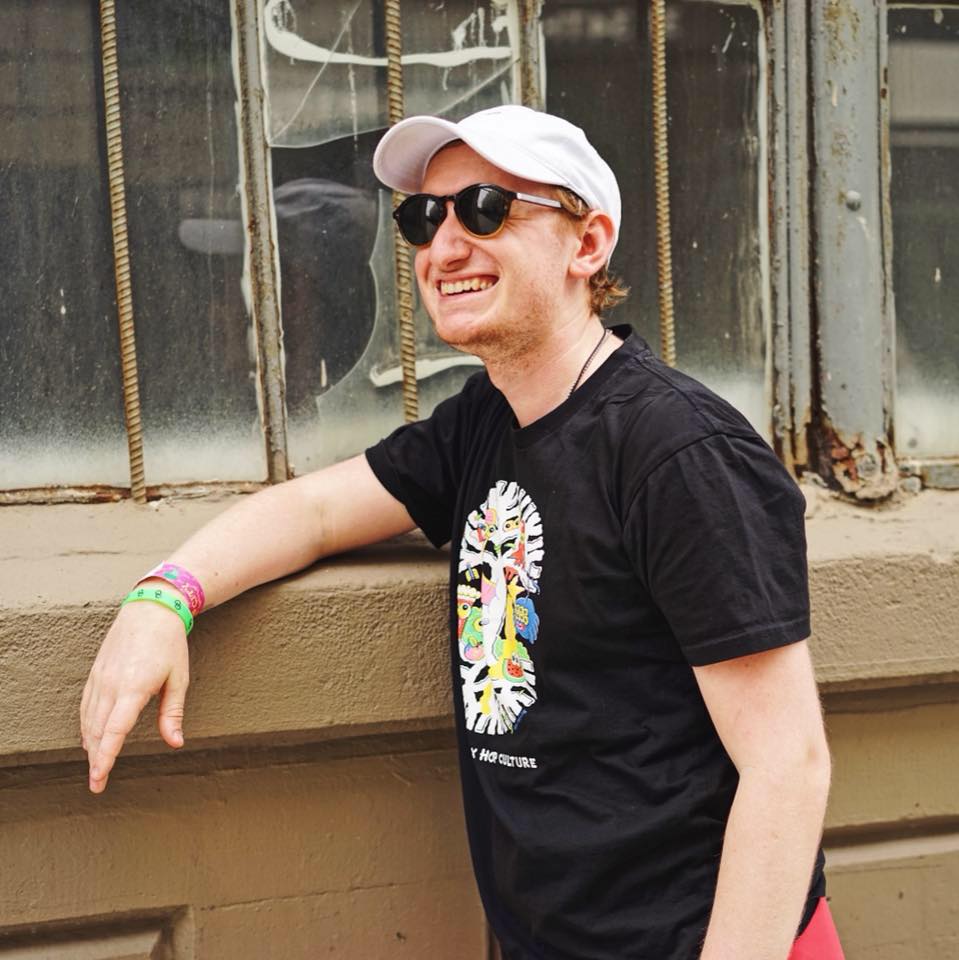Shop
Yakima Craft Brewing Invests in the Local Beer Scene
For craft beer fans, Yakima is synonymous with hops, and with good reason; the region produces over 70% of the country’s hops. In fact, there’s a good chance your favorite brewery sources its hops from this part of Washington State.
But perhaps surprisingly, the craft beer fever hasn’t gripped Yakima, which is about two and a half hours from Seattle. The history is there: Bert Grant, a legendary brewer in Washington, opened Grant’s Brewery Pub in 1982 and developed the model for brewpubs. But when Grant shut down his operation in the mid-2000s, craft beer was non-existent in Yakima.
That might be changing. In 2007, the team behind Yakima Craft Brewing picked up where Grant had left off and became the only craft brewery in town. Now, 11 years later, Yakima Craft still brews on Grant’s original boil kettle.
To keep up with the times and to meet the increasing demand, Yakima Craft Brewing invested in a brand new taproom and increased production capabilities. The brewery invited us out for the grand opening of the new space and to sample some of the local flavor. I spoke with Tim Butterfield, Yakima Craft’s Sales and Marketing Director, about some of the new additions to the brewery and the state of beer in Yakima.
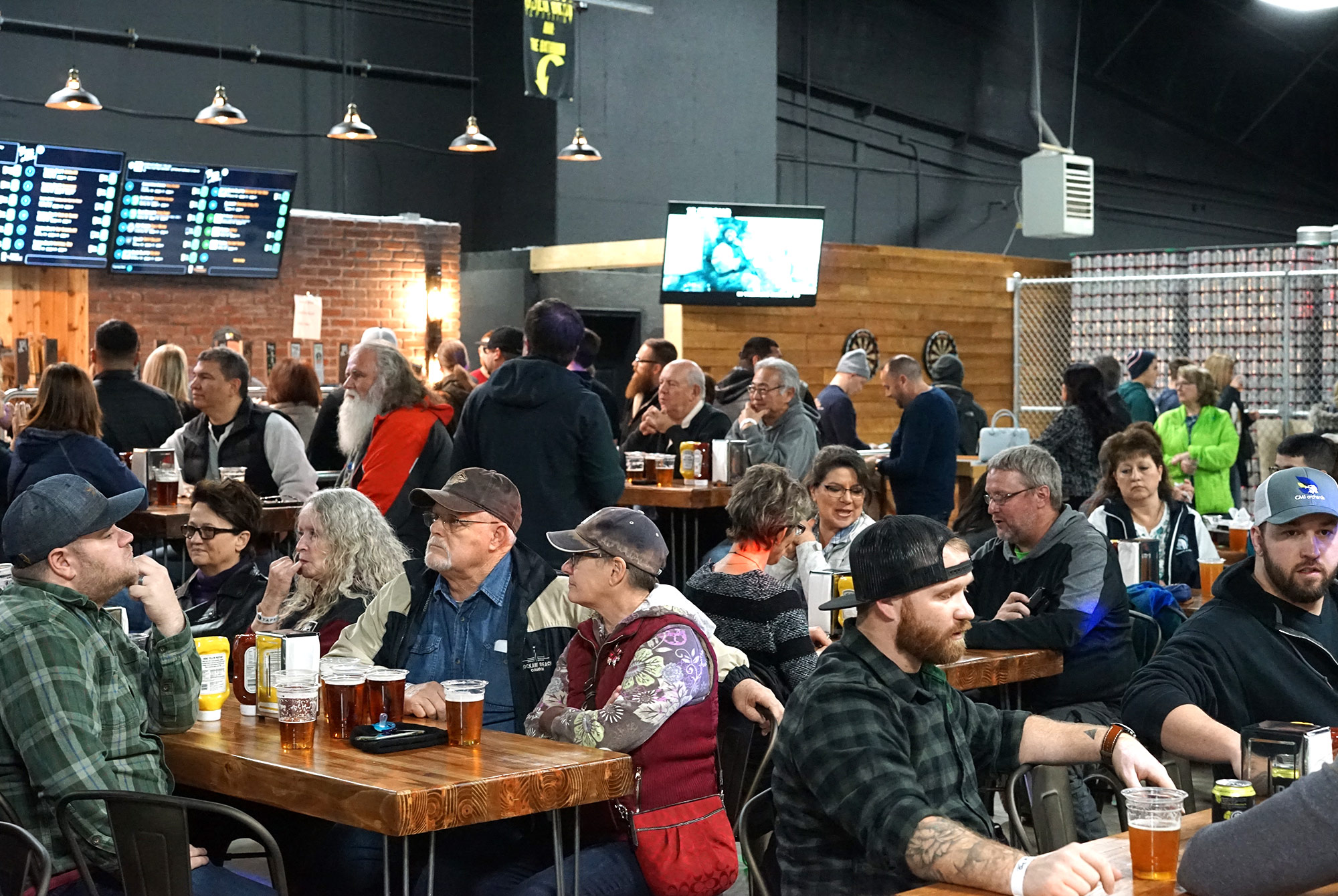
John Paradiso: Can you tell me how the Yakima craft beer scene has changed since you opened?
Tim Butterfield: People already came for the hops. We started 10 years ago when Bert Grant shut down and we bought some of his equipment. We actually based a few recipes as a tribute to him. He was a hometown hero for Yakima.
The brewery back then was really the only one around. But with this boom of new craft breweries, people have started seeing that Yakima is cool. Yes, it’s a destination for the hops, but now you can get access to hops that no one else does. I think more people are starting to catch on to that.
We’re capturing a new audience that we’ve never seen before. The Seattle market is coming down here much more often. And Seattle’s got great breweries, so why would you want to come all the way down to Yakima? People are driving from Seattle because it’s worth it. They’re saying, “If I can see the hop fields and get to check out 10 cool breweries at the same time, that’s awesome.”
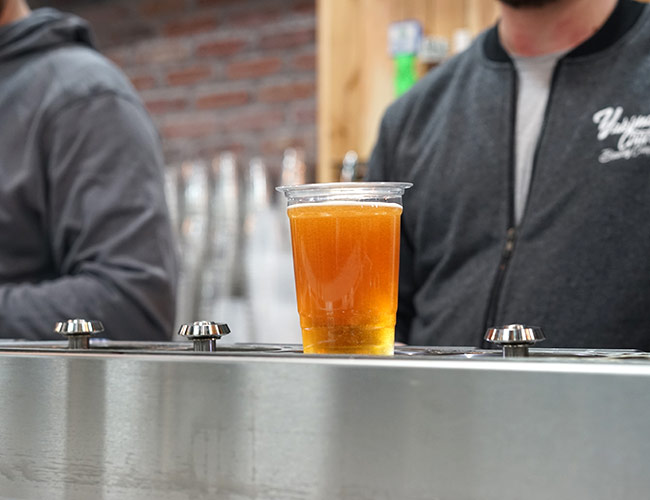
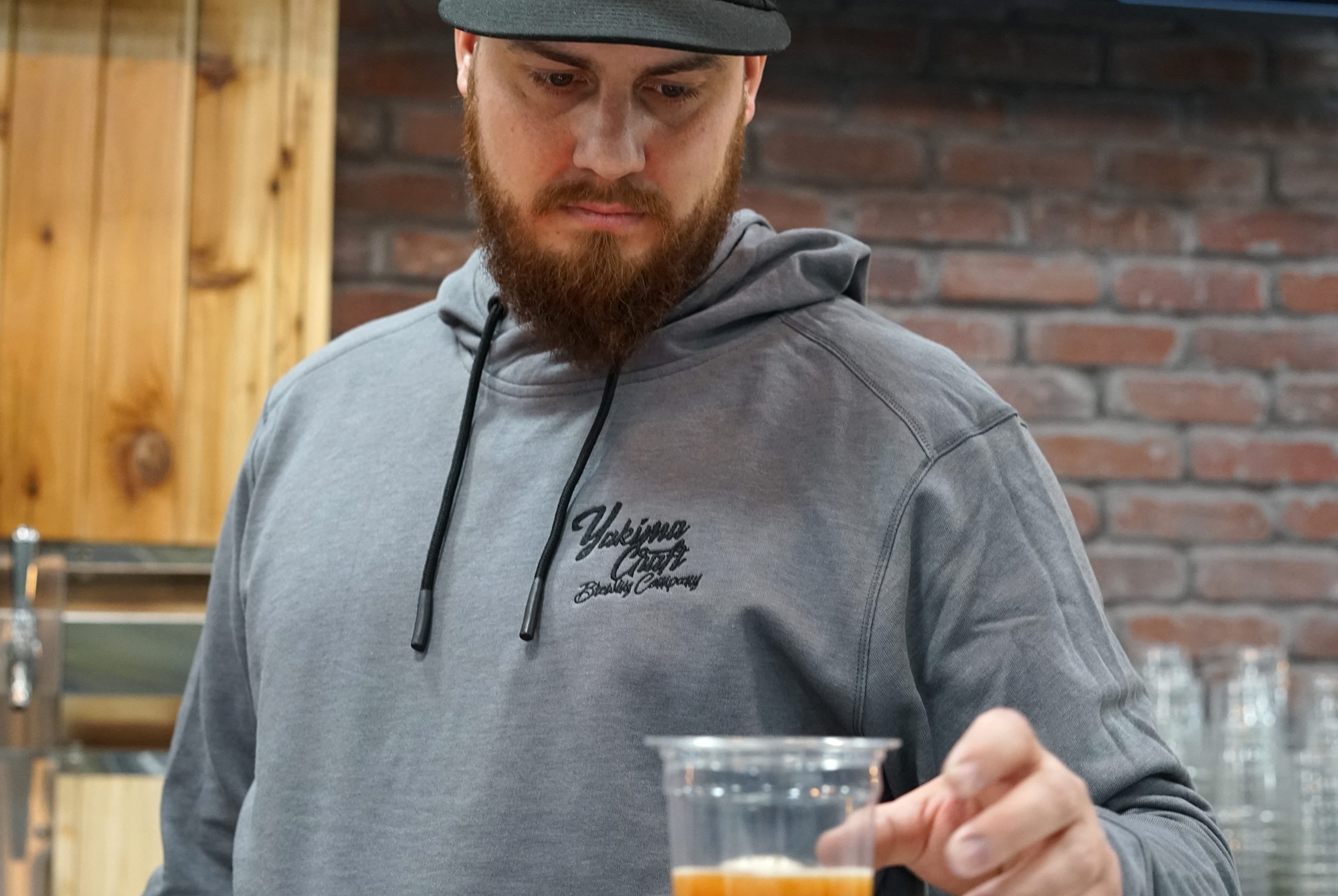
JP: What went into the decision to open this new taproom?
TB: The major factor is that it’s connected to our building, and it’s just the size it is. You can’t really split it up. When we originally started looking at the plans we thought more storage than taproom. But what we also started thinking was, “What problem can we solve in Yakima?” And one of the problems is that when the winter hits or you have rain, where do people go and what can they do? And there just wasn’t a great space that’s big and inviting. We didn’t have the option of an outdoor area like Bale Breaker but we thought, “Well, let’s make this our outdoor area.” So that was really what we thought of when we came up with this. It kind of just grew from there.
Another thing we looked at was, “How can we support our local breweries?” We started looking at whether we could do 24 taps and we found out it’s not legal as a brewpub. But we went to the liquor control board, and to be able to do that, we had to be a restaurant. So we spent a lot of time and money on doing this because we feel like it’s a model that really emulates the craft beer industry. Because the craft beer industry is super supportive. You’ve seen occasional guest taps but never 12 taps of other people’s beer.
Legally in Washington, on a brewpub license, only a quarter of your taps can be guest taps. It was a nine-month process to make this happen. Because initially, they said it was impossible, you can’t do it. And we just bugged them enough until they said, “We found a workaround, this is how you can do it.” But we had to separate our buildings so there was a lot of stuff that went into it but we felt like it was worth it to support our local community. No matter what you do in the craft beer industry, you’re never going to make everyone happy. Somebody’s going to be like, “I hate your beer.” So we thought that it’s nice to have other options.
JP: It seems like an extension of the fact that you were the first craft brewery in Yakima. In a way, you’re bringing everyone under your umbrella. Plus, it gives you a chance to educate people about what else is happening in the city.
TB: And it’s cool too because we know all these guys. The craft beer industry is so relationship based. And that doesn’t happen everywhere but we wanted to create that feeling.
JP: Based on some of the conversations I’ve had with folks in town, there’s a perception that Yakima is behind the times. In terms of beer, a few breweries are moving toward the trends of New England IPAs. Do you see the community as being behind the times? Have you already caught up?
TB: A lot of it has to do with the change of ownership at Yakima Craft. So when we took over, we just had to get the place stable. No one knew what the costing was on anything. It was almost like if you look at it like triage in the hospital, first you have to stabilize the patient and then you can work on fixing things. It took us about a year to stabilize the business and now we’re really looking at the fact that we have access to hops that other people don’t. Experimental stuff, stuff that’s not out there. The way that we’re moving forward or the way we can surpass the trend is that we’re going to be trying these new experimental hops and doing brews no one else can even do. Even if they wanted to, they couldn’t get their hands on them because those breweries aren’t here locally, so that’s really the direction we’re headed. Even with the New England IPA. We did a Red New England IPA, and no one’s really done that. We’re not trying to do what everyone else is doing. Let’s take it and innovate more; let’s do something new. Our plan for this year is at least 12 new beers, one a month. And hopefully, we can surpass that and have a few months with 2 or 3. We’re not going to switch our business model to only be one-offs. We’re still going to keep our flagships because we have a good base of people who like our flagships. But we also want to cater to the people that want new things. Especially if you’re going into a Seattle market, you have to. You have to be innovating or you’re dead.
JP: What things do you want to emulate or replicate that are popular in the industry and what are the things that you think aren’t necessary or that you’d want to avoid?
TB: It’s hard to say because we’ve always been kind of anti-putting fruit in our beers and stuff like that. But at the same time, if people like that, we’re not above it. I know a lot of times, if you talk to certain brewers, they’ll be like, “Oh, I’ll never put that in there.” But to me, if that’s what people want, I’m not going to not create something because we personally don’t like that. Not every beer has to be something I like. It just has to be something that somebody likes. I don’t think there’s anything we won’t do. Especially with as many beers as we’ll be pumping out of this place, we’re going to have to do some things we don’t necessarily love. But we’re going to do what the people want and I think having other people’s beers on tells us, “Hey, this style is working, or hey, you could tweak this style and it’d do well.” It’s all a big circle.
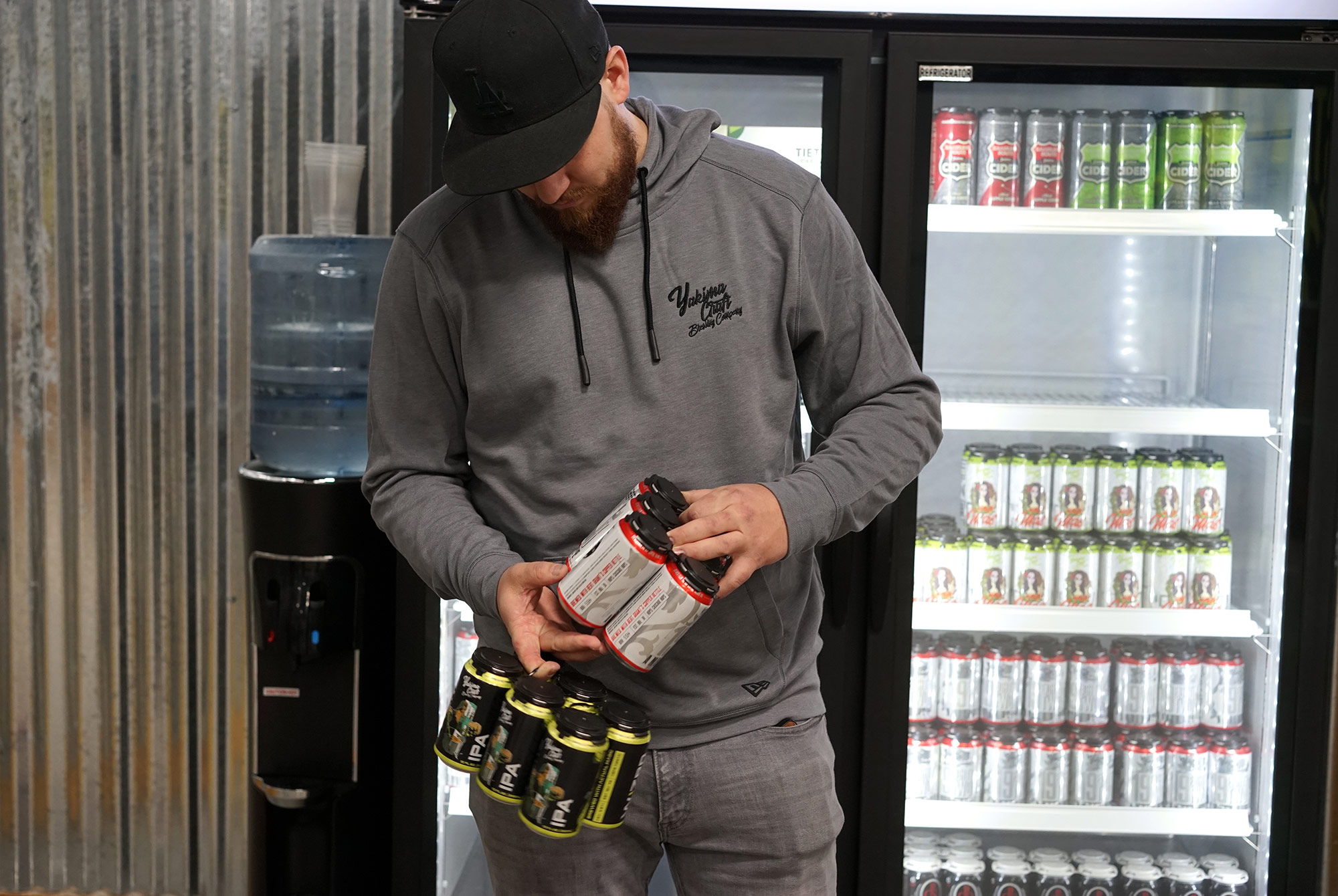
JP: One of the eye-catching additions for the taproom opening was the new draft system, which fills cups from the bottom. Where did the decision come from to go with that?
TB: When we first saw it, it was more of a marketing thing. But when we actually started talking to the guys, you get about a 95% efficiency rate on your kegs. And our old tap system — which was terrible — probably had a 70% efficiency rate. Our new system is expensive, but it was worth the investment because I think we’ll see our return on that in keg efficiency.
JP: Will you be able to switch to glass or will it always be plastic?
TB: Plastic was just for this weekend, so we will have glass.
JP: Are you able to do glassware for different beer on this system? Is that something you have to sacrifice?
TB: It is a sacrifice and we’ve spoken to Bottoms Up about it because the other thing we ran into when we started looking at this system is that I think there are only four craft breweries that have it in the country. And I think part of that is because craft beer drinkers are particular about their glassware. The tradeoff wasn’t enough to not do it but we did ask if they had designs in the future for a craft beer glass, a tulip and stuff like that. It’s a pretty large investment for them, every glass shape is about $200,000, so right now they’re sticking with the regular pint glass. He did say they’re always trying to innovate and always trying to come up with the next best thing. So right now we just have this glass but we’re hoping they come out with some more glassware for it and that we can get them in.
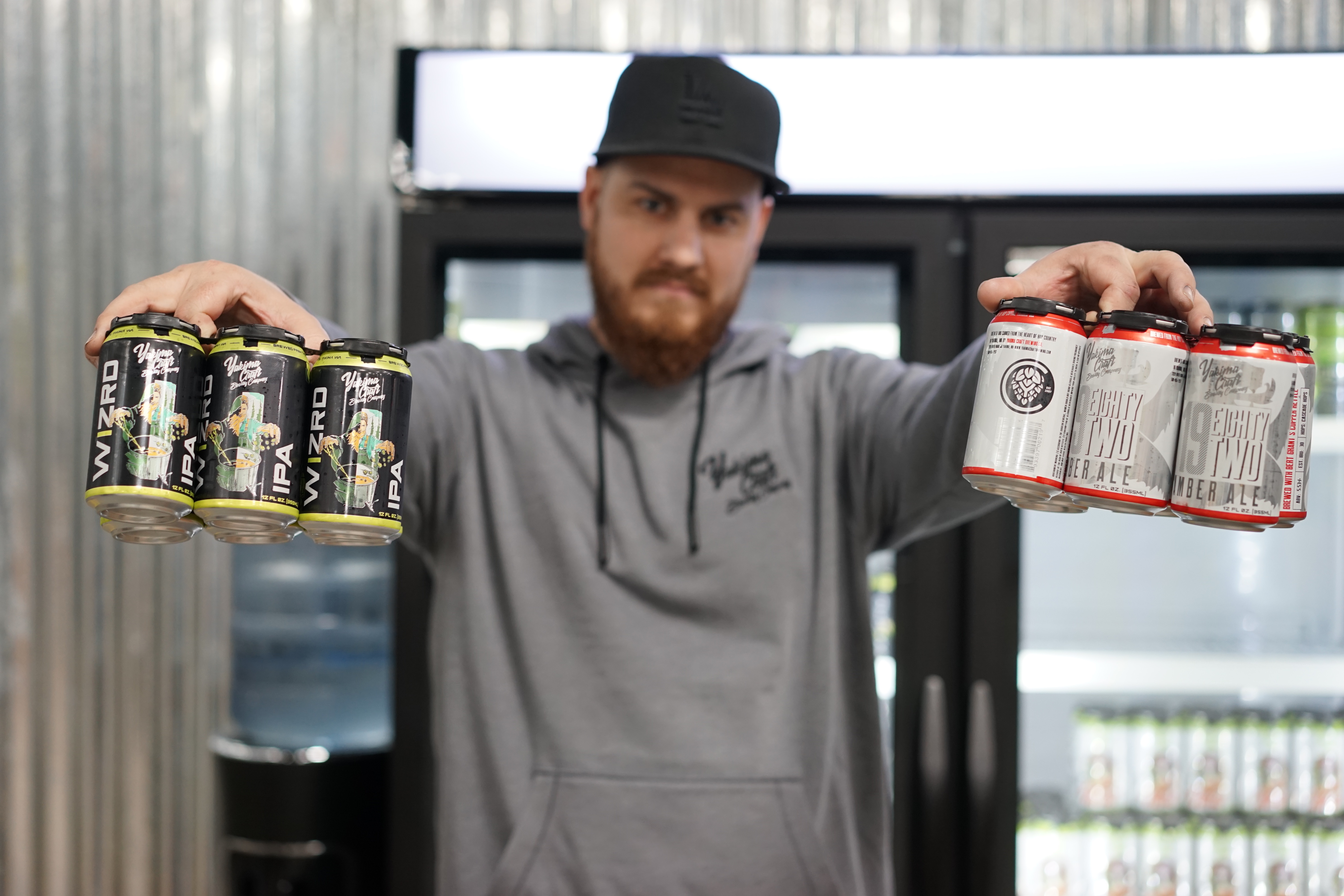
JP: The craft beer community skews a little bit older here in Yakima. Does that have any effect on what you guys do?
TB: I think it definitely affects the way we do business. We can’t necessarily do can releases and sell out in a day. That’s usually where you have a mass quantity of Millennials. I think a lot of the people that come into our brewery are people that used to drink at Bert Grant’s place. I can’t tell you how many people have a story about when they were at Bert Grant’s place. So it changes our business model because we can’t do things exactly like a Great Notion or somebody like that. But we have very consistent customers, whereas Millennials won’t always return. Here, you can pretty much count on X amount of people coming through your door, whereas some bars you don’t know. Because the new hot thing is where the Millennials are going to run off to. So it’s a good and a bad thing.
JP: Right now, there isn’t a section of Yakima that is sort of a craft beer hub. In other cities, you might find a street or neighborhood that has a few breweries that are within walking distance. With Valley having opened up just down the street from you, do you think this could become a craft beer strip?
TB: I think there’s definitely a possibility especially because there’s stuff that almost looks abandoned and I think there could be a growth spurt over here. I think it would take the right people. Right now we don’t know of anyone else trying to come over here but we’d love to see it turn out that way. We’re trying to create that atmosphere.


